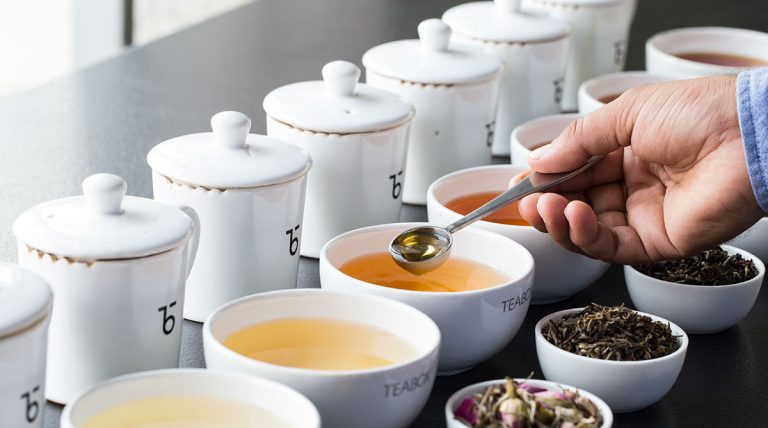Drinking tea is an art that closely parallels the art of savoring a fine wine. By indulging in a few expert manoeuvres and stylings, it’s possible to heighten the experience of tea immensely. Critical drinking involves a few steps and, with practice, one is sure to develop a refined tea palate that allows you to appreciate and enjoy the many nuances of tea.
Getting started
A sensory evaluation of tea is about identifying the basic aromas in the nose, tastes in the mouth, and other palpable sensations in the mouth. These experiences are expressed with ‘notes’ or references to smells and flavors similar to a known product. For example, a tea can be described as having notes of lychee fruit without it actually containing that fruit.
It is important to note that sensory evaluation is a subjective experience, and may vary from person to person. Those who have never tried, say a particular fruit, may not be able to gauge its flavor and fragrance in a tea, while others can. The wider our experience with different kinds of products (fruits, spices, etc.) the greater will be our ability to extensively evaluate a tea’s flavor profile.
Technique of Tea cupping
Tea cupping, unlike tea tasting, is a sensory exercise that allows us to make discoveries about a particular tea. Through cupping we evaluate the many qualities of a tea including its aroma, flavor, body, color, clarity of liquor and so on. In a way, cupping is a more objective exercise as compared to tea tasting.
Tea cupping documents the sensory aspects of tea across three stages:
Dry Leaves: Appearance and Aroma
Wet Leaves: Appearance and Aroma
Tea liquor/Infusion: Appearance, Aroma and Taste
Steps in tea cupping
- Examine the dry leaves: Note their appearance, color and aroma. Check for leaf grade, presence of buds, tips, leaf shape, color and smell.
- Prepare the tea infusion as prescribed. Ensure you use fresh water. Take into consideration the appropriate water temperature required for making a each tea type.
- Once tea is brewed, separate the tea leaves from the infusion.
- Examine the wet leaves. Note their appearance, color and aroma. Take a note of the leaf size at this stage of cupping. A vegetal aroma is considered a mark of a good, fresh tea.
- Examine the tea liquor for its aroma and color. Look for transparency of liquor and evaluate its color. Bring the cup close to nose and smell the ‘attack’ (first notes). For a fresh tea, the aroma should be brisk and definite, without humid odor.
- Examine the taste of the liquor. Take in a sip of tea with plenty of oxygen and roll it in your mouth. This will give you a basic estimate of whether the tea is sweet, bitter, acidic, or umami. Inhale and drink the tea. Now evaluate the tea’s aroma and palate notes. Check for body (light, medium or full), the level of astringency (low to high), pungency, texture (straight creamy or velvety), the complexity of flavors, and length of flavor (short, medium or long).
Is tea tasting for experts only? Read what tea expert Frank Miller has to say.

Comments are closed.